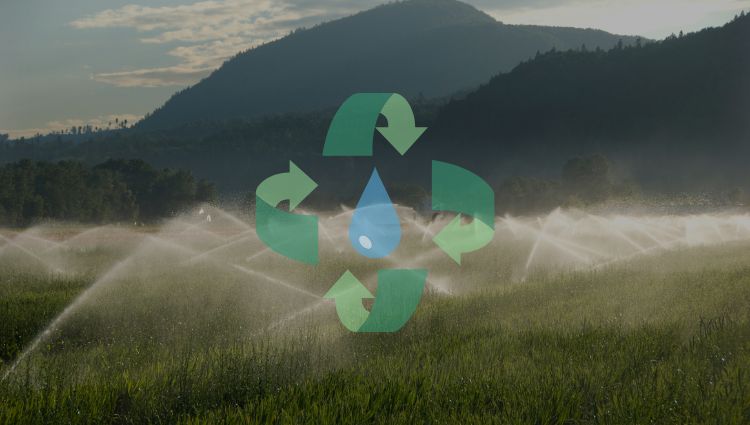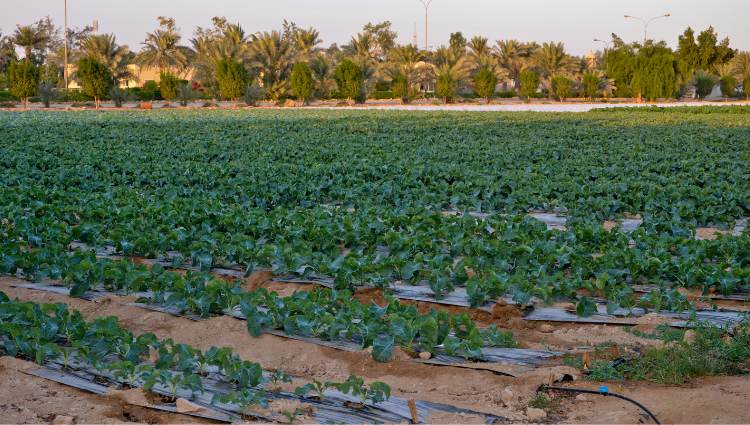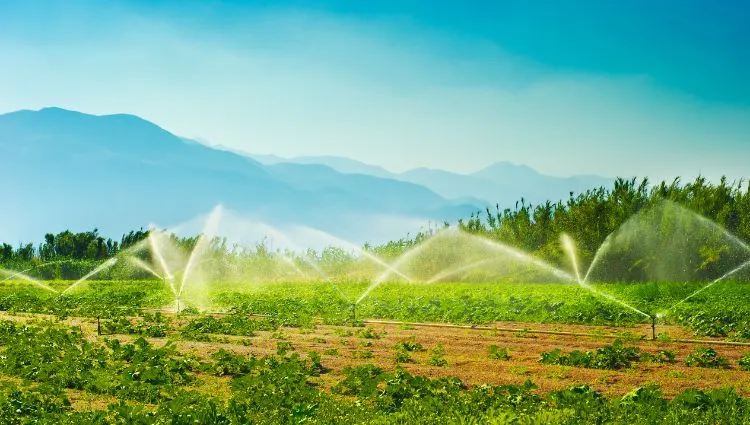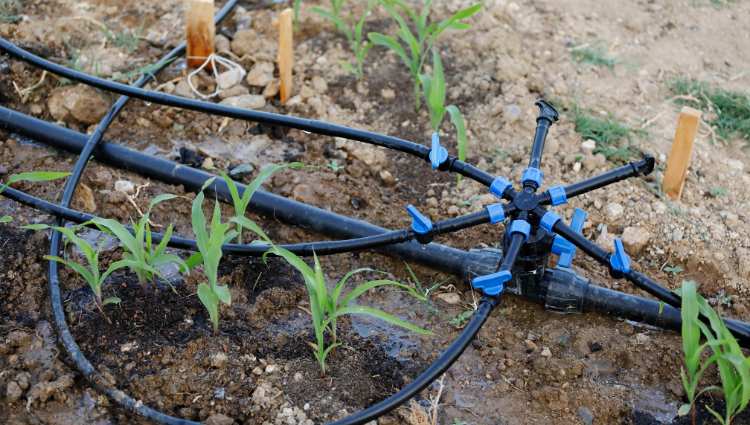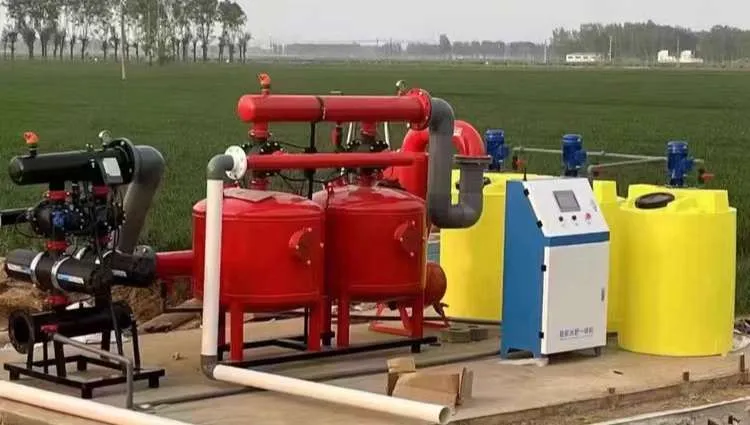Зміст
There might be some problems during the operation of an irrigation system, such as leaks and blockages. This post will mainly talk about leak issues.
If an irrigation system has a leak, the problem usually involves two parts: the pipes and the terminal sprinkling devices. Іноді, it’s easy to locate the leaking point. Other times, the leak is hidden, and it’s hard to detect. But please don’t worry — this post will introduce some methods to help you find the leak.
На додаток, it’s worth mentioning that some of the methods recommended here are not only useful for irrigation systems, but can also be applied in gardening, residential areas, and construction projects.
Direct Observation Method
This method may sound like it lacks technical content, but it is actually the most direct, most traditional, and most commonly used method. Basically, by direct observation, you can almost always find the leaking spot, or at least roughly determine the leaking area.
In irrigation systems, many products are not buried underground, but are directly exposed to the air. These products include sprinklers, крапельки, drip taps, layflat hoses, крапельки, клапани, and some pipes and fittings. So by directly observing them, you can find the leaking point.
If there is a leak in the irrigation system, certain “signals” will appear. Наприклад, we may notice that the water meter readings show a significant change compared to usual, the water bill increases abnormally, or the pressure gauge fluctuates unexpectedly.
Based on these signals, we can assume that the system is leaking. We can inspect along the pipeline route step by step. If the pipes are exposed to the air, we can spot the leak quickly. If the pipes are buried underground, we can pay attention to whether there are any water stains, damp spots, or puddles on the surface. If there are, then clearly the underground pipe in that area has ruptured.
We can also observe whether the water output from sprinklers and drippers is smooth. If not, it may indicate that there is a leak or blockage in the nearby pipes.
We can even observe the growth condition of crops and plants. If we find that the crops in a certain area are growing noticeably differently from others — for example, showing signs of withering or uneven growth — then we can also assume that there might be a leak in that area.
Pressure Test
When a pipe breaks or a pipe fitting becomes loose, it can cause water leakage, and this problem can be detected with a pressure gauge, because leakage will definitely lead to pressure fluctuations.
We can use a pressure gauge to test different parts of the irrigation system to find the leaking spot.
Moisture Check
If the pipe is buried underground, we can judge the leaking area by checking for water stains on the ground surface. Однак, sometimes the stains are not obvious and are hard to notice.
At this time, we need to use professional equipment. We can use a moisture meter to measure the surface moisture. If the reading is significantly higher than the normal environmental level, or noticeably higher than the surrounding areas, then it is very likely that the pipe at this location is leaking.
In short, we can use a moisture meter to measure different areas of the irrigation zone, and determine the leaking spot by comparing the moisture differences.
Leak Detection by Sound
When a pipe leaks, it usually makes some unusual sounds, and we can try to identify the leaking position by listening to these sounds.
Однак, irrigation systems are used outdoors, and the outdoor environment is complex. It’s difficult to hear the leaking sound clearly with just the human ear. So we need some professional tools, such as an acoustic leak detector.
An acoustic leak detector can amplify the sound waves produced by the leak. These sound waves are captured by the device’s sensor and output through a headset or display. We can use the acoustic detector in the suspected area to find the leaking spot.
Dye Testing
This is actually a color marking method. We can add some harmless special dye at the water source. The dye will flow through all parts of the irrigation system along with the water. When a leak occurs, the dye will spill out and cause a visible color change. The engineer can identify the leaking area by looking for the location where the colored dye appears.
Звичайно, dye has its limitations. If the pipe is buried underground, we still need to rely on other methods to find the leak.
Infrared Thermal Imaging
Water has a high specific heat capacity. When a leak occurs, water absorbs and releases heat, which causes temperature changes in the surrounding environment. These temperature changes can be detected by infrared thermal imaging equipment and displayed as images. Engineers can use this method to locate the leak.
Однак, it’s important to note that this method works best during times when the temperature difference is large. If the environmental temperature is too high (such as at noon on a hot summer day), the thermal imaging camera may not work effectively.
Фактично, this method has many limitations, and the cost is relatively high. The author recommends using the previously mentioned methods — they are more than enough!
Кінцеві слова
This article introduced six ways to find leaks in an irrigation system. Фактично, there are still some small tips and experiences that were not mentioned here. But in general, by using the methods in this article reasonably, you should be able to solve the problem. I hope it’s helpful to you. If you’d like to share your own experience or knowledge, feel free to send us an email. We’ll be happy to add your method to this article.
Нарешті, будь ласка, дозвольте мені коротко представити нашу компанію. Rainfaun is an irrigation product manufacturer based in China. We mainly supply крапелька зрошення, спринклерний полив, and various pipes and fittings, включаючи PVC pipe and fittings, BSP thread pipe and fittings, PP фурнітура, шланг мирян, крапелька, крапельна стрічка, спринклер, дощ, капати, клапан, і багато. Ви можете знайти інформацію Про Рейнфаун і Наша продукція на цьому веб -сайті.
Якщо ви хочете співпрацювати з нами, Ви можете Клацніть тут щоб заповнити форму.
Автор: Майкл
Редактор: Майкл
Рецензент вмісту: Майкл


